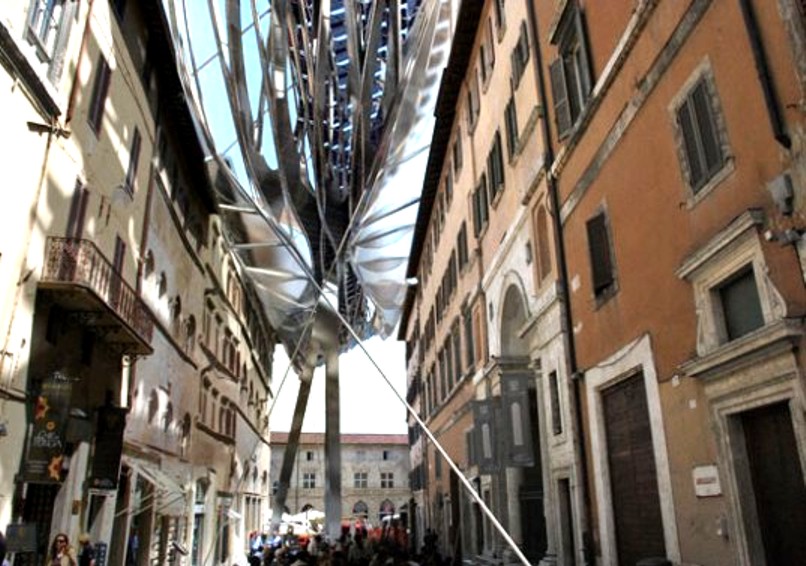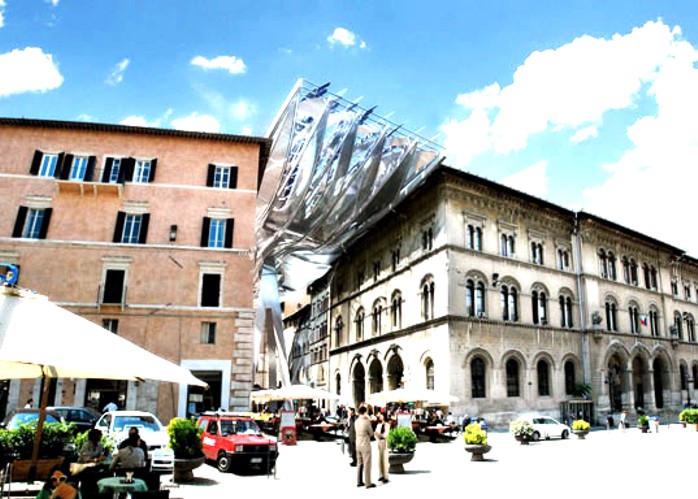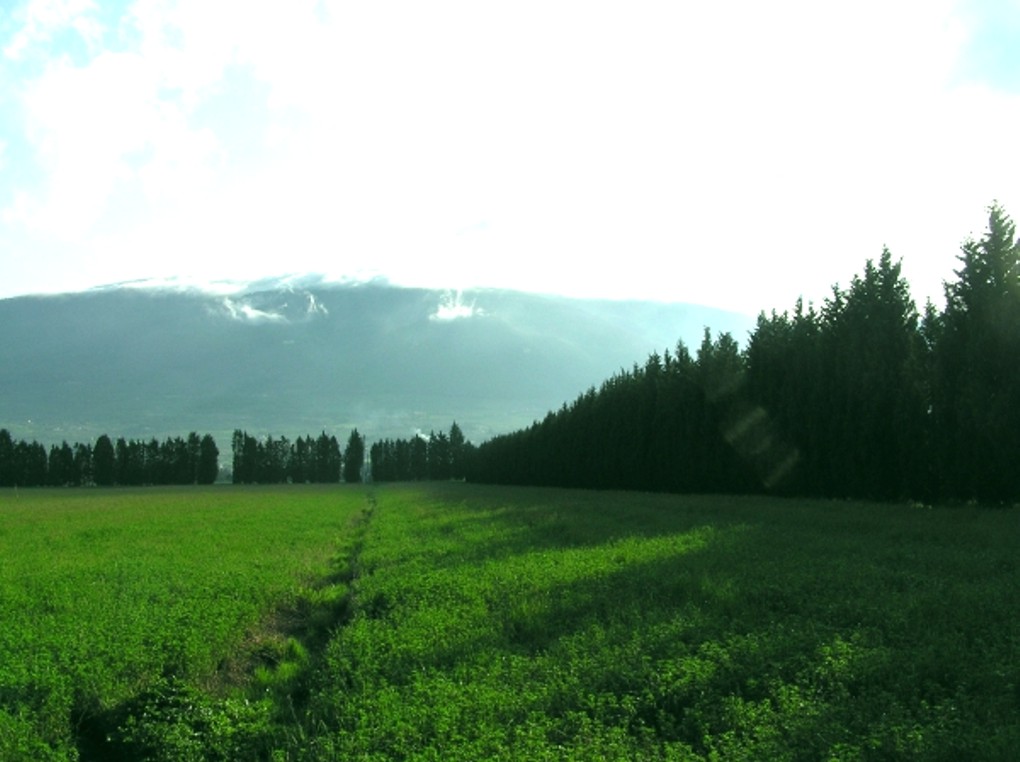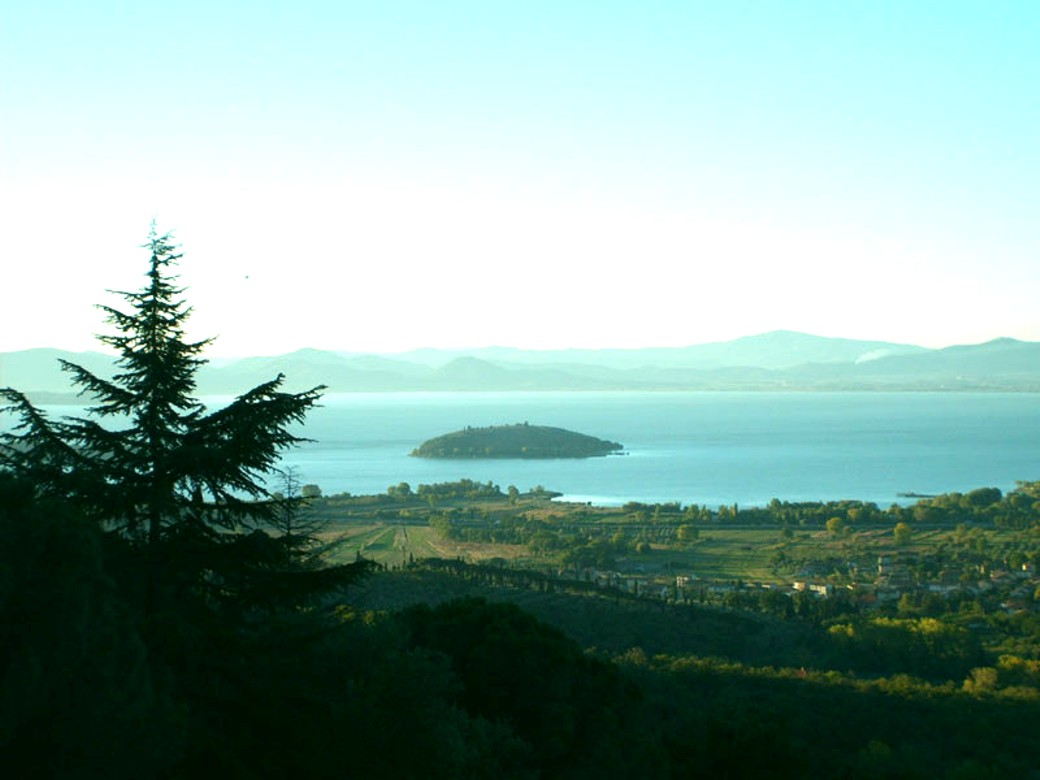
Whither Your Best Bets, If Herd Immunity Moves Out Of Reach?
Posted by Peter Quennell
1. Why Should TJMK Care?
Well, absent Covid, TJMK’s end-game would have come and gone a year and a half ago.
We’d have done a wave of damning press releases in conjunction with insider panels, books new and revised, and maybe some appearances at conventions and on TV.
But to avoid further media tricks, and misreporting, and a backlash, and legal threats, this involves all of us being on the same page, in Italy, the UK and the US. And travel has been risky or forbidden for at least a year and a half.
But the delay is not a net negative, as Part 5 below explains.
2. Herd Immunity Prospects Decline
What seems to be happening in the turbulent COVID realm is IN PART touched on in the video above.
1. For various reasons, some sound, some less-so, global vaccination has a long way to go. Above 20% of the global population, those 14 and under, cannot be vaccinated, and a similar percentage of those older than 14 is iffy or stubborn about the shots. Many national vaccination rates are still way too low.
2. The present vaccines (unlike all other vaccines in history) target only a particular spike protein, and the virus only needs to mutate to get around that to be on a home run, as the Delta variant shows.
3. Shots and masks still seem on balance worth doing, to minimise the spread and consequent deaths, to minimise one’s risk of long-haul Covid and lifetime weaknesses, to lighten the load on hospitals, and to keep many or most kids safe.
4. The antibodies from the current vaccines of course do fade, but if the more-broadband memory B cells are activated, they plus glutathione look to give okay immunity for life (see in Comments: Further tip 4).
3. The Personal Peak-Immunity Route
Maybe the least risky bet, and one that is quick and cheap (and talked about openly in WHO) is what we posted on more than a year ago: to push one own’s personal level of immunity up to the roof.
Which primarily means boosting our own natural glutathione levels in any way we can.
Many YouTubes explain this point, and research by the global World Health Organization and national counterparts like USNIH agree 100%. There is no controversy here.
But only a very small faction of glutathione directly taken in a capsule has up to now been making it out of the gut and into the blood.
Luckily the main glutathione building block, easy-to-absorb N-acetyl-cysteine (NAC), has been widely available in the US and has been disappearing fast off vitamin-store shelves.
But there are two problems, one old, one new.
1. If other body substances (selenium, zinc, vitamin D, etc) are low then NAC will fail to fully convert and so glutathione will not peak.
2. The US Food and Drug Administration has chosen this, the worst of all possible times, to ban NAC as a supplement and declare it a drug.
The reasoning is truly appalling (that is an eye-popping read) and the FDA did some incredibly sloppy work here, so chances of this being reversed through administrative appeal or the courts is good.
But that could take some time.
Meanwhile our two best bets, if we want to go this immunity-boosting route, vaccinated or not, is quite well explained on this (for-profit) website.
One is to look around for cysteine substitutes, and some that are nearly as good are easy to spot with an internet search.
4. The New Acetyl Glutathione
The other best option is to turn to the new glutathione in an acetic acid carrier, which far more easily makes it through the gut and into the blood than simple glutathione did.
Prices vary widely, the cheapest (see the Amazon range) which for now looks to be Monoherb might do as much good (read those Amazon reviews).
Finally, there’s some suggestion that going the acetyl-glutathione route is BETTER for Covid purposes because those other pesky neccessities (selenium, zinc, vitamin D, etc) don’t apply.
5. More Of Us Back On The Same Page?
Anybody who works internationally will tell you the same thing. The US population harbors an exceptional amount of fear. In recent months, it has been like sharing space with 100 million spineless jellies…
The American documentary film maker Michael Moore explained this in a report on a mass shooting in a school (Bowling for Columbine) as being a result of forever-scary news reports, and advertising that widely suggest dangers will overcome you unless you buy their product right away.
But it’s more than that. Very big bucks are made from paranoia-stoking radio and TV. The US government has indeed lied at times, as it did about Vietnam, Iraq and Afghanistan. In 2008 Wall Street did widespread economic harm. Global mass migrations are unbalancing “the north”. Weather is bothersome.
But ungrounded fears may have peaked for now. Conspiracy theories are being proven untrue time and again. Millions seem to be smartening up. Most people do have spines.
And as TJMK is itself in a fight against a conspiracy theory, this seems really helpful for us.
Fine Italian Tune On A Fine Italian Accordion, But Played By…
Posted by Peter Quennell
Actually Marion LMJM is French.
She is playing Csárdás by Vittorio Monti. The crescendo - wait for it! - begins right after 2’00”.
Marion plays other instruments too, and has a pretty okay singing voice. She sings a lot in self-taught Russian and most comments under her YouTubes are Russian, though she has not been there yet.
You can read her unusual backstory here.
Perhaps The Coolest Two Italian Actors Who Ever Lived
Posted by Peter Quennell
For full screen, mouse-over & click box at lower right.
Stars In An Italian Film Noir
This clip is from the epochal 1949 movie Riso Amaro (Bitter Rice).
The dancers are Silvana Mangano and Vittorio Gassman.
Vittorio’s character, from elsewhere, had recently stolen a diamond necklace and he was keeping a low profile with his female accomplice in the Italian ricefields region north east of Genoa.
Silvana’s character, from the region, had happened upon the necklace, and she is wearing it here.
Bitter Rice was the culmination of the anti-glamorous anti-hip Italian neorealism style which prided itself on being the opposite of Hollywoodism.
This movie paved the way to the astonishing wave of the 1950s through 1970s which included La Dolce Vita, Bicycle Thieves, Amarcord, La Notte, La Strada, 8-1/2, Rocco and His Brothers, and many other Italian classics which did so well.
And Silvana? She paved the way to the emergence of such similarly cool and fearless actresses as Sophia Loren, Gina Lollobrigida, Monica Vitti, Anna Magnani, Claudia Cardinale, Giulietta Masina, and Virna Lisi.
She created the mold. Not bad for an 18-year-old! As Silvana was when she starred in this movie. Two years previously, at 16, she had been crowned Miss Rome, and that led to this first of many starring roles.
The song that so suits this clip is Caballo Viejo, a classic Venezuelan mambo re-recorded worldwide.
So If You Need To Get To Italy But Due To COVID Really Can’t…
Posted by Peter Quennell
Interesting idea! But frustrating for us, too.
Several of us at the Wiki and TJMK have been waiting for over a year to get back in Italy for a few days to command all of the high ground in our pending final push
We need a final batch of documents, and the answers to myriad open question, and we need to hear how things are breaking with Dr Mignini’s book - apparently pretty well.
Meredith May Not See Justice (Yet) But She Will Leave At Least Three Legacies
Posted by Our Main Posters

Meredith’s goal in life was to help people, and she had thought of making a career in the European institutions in Brussels.
So much of human organization is messy and very hard to make better. She would have found that. But somehow, often in a terrifying lurch, systems do sometimes tend to get better.
These better systems between them benefiting millions may all be attributed to Meredith. More than 99% of humanity can achieve in a lifetime.
1) Perugia is a safer more thriving place now
This is a repeat of our post of 9 April 2010 - there has been a mayor-change, but the broad safety and economic trends continue.
Meet Wladimiro Boccali. The mayor of Perugia.
A year ago when Mr Boccali ran for office (video above) it was in the context of a city-wide desire for prosperity, public safety, support for the police and the court system, the enhancement of Perugia’s reputation, and the clamping down on drug dealing and student excesses.
A mood that very much flowed from the shock of Meredith’s passing. A sense that certain things had gone too far.
Since then, Mr Boccali has been in the Italian national news almost daily, and he is coming to be seen as the kind of political leader Italy could really use in a turbulent future.
He is in the news again right now, because there was a riot in the main piazza of the old city by some drunks late last saturday night.
In part inspired and encouraged by good town leadership, Perugia’s economy is now one of the more thriving city economies in Italy. Perugia’s median IQ is extremely high (Perugia is probably one of the smartest cities in Europe) and a lot of very advanced research goes on there.
Perugia’s town administration does many caring things, such as the special city council meeting for Sonia Marra.
And seemingly attracted by all of this, people are moving to Perugia in droves - its population is increasing at double the national growth rate.
So. Meet the new Perugia. Meredith’s own qualities, writ large.
Since that post Perugia and the university have recognised Meredith by way of a scholarship and a one-day seminar.
2) American universities acted to stop future Knoxes
Knox behaved grossly irresponsibly in heading to Perugia under-funded, intent on drug-doing, and with zero intention of seriously studying.
The University of Washington and many others realised they could have huge liabilities if they did not distance themselves a lot from such loose cannons in future.
In October 2009 we reposted this report by Andrea Vogt which described the initiation of measures many American universities have now come to implement.
Mirroring a nationwide trend, the University of Washington is overhauling how its students and professors interface with foreign countries….
The UW study abroad experience today involves much more oversight than it did two years ago when Amanda Knox left on an unsupervised European adventure that quickly degenerated into a nightmare.
When Knox, who is on trial for murder in Italy, left her familiar U-district environs in late summer 2007, she embarked on her own independent study in Umbria with very few guidelines or institutional oversight.
She arrived in the tolerant student melange of Perugia, a vibrant college town with temptation at every turn and many paradoxes (drug deals and party plans are often made on the steps of the cathedral).
A month later, the honor student’s pub-crawling, pot-smoking college shenanigans had taken a very serious turn and she was being hauled off to the Capanne penitentiary, where she remains today, pleading her innocence as the trial and controversial accusations against her plod forward.
Once her troubles began, the university tried to offer support, but had very few official guidelines to follow for responding to the kind of complicated legal-judicial matter Knox faced.
It’s different now….
In the wake of several negative overseas episodes, officials are busy raising awareness about the positive impact the UW is having worldwide and taking steps to improve communications, regulation and emergency preparedness for its students abroad.
Compared with two years ago, international education officials are more closely tracking who, where and what study-abroad programs involve. The university has new rules:. The department chair has to sign off on the program. Insurance is required. So is a cell phone. No program money can be used to buy alcohol, just for starters.
“There’s a much more formal process now,” said Taso Lagos, a UW professor who teaches international communication and manages a study-abroad program in Greece. “With administrators that are very aware, with lines of communication open and policies in place if something happens.”...
The UW’s growing commitment to international education—- even in a budget crisis—is reflected in some developments. [UW Vice Provost for Global Affairs Stephen Hanson] was named a vice provost in January, and in the spring, the UW dedicated an entire wing of the Gerberding Hall administration building to growing an international mission and profile.
This year, a travel security and information officer is coming on board to oversee emergency response and preparedness, as is Peter Moran, a new director of international programs and exchanges who previously worked at the Fulbright Commission office in Katmandu, Nepal.
New guidelines are being put in place to streamline communications, ease financial transactions and institute mandatory training for faculty taking students abroad. The Global Support Project, a rapid-response team with one person from each branch of the central administration, takes on cross-disciplinary international challenges.
Such reforms aren’t unique to UW.
Universities across the country are examining how better to organize study abroad to meet blossoming demand from students (and prospective employers) for foreign experience. Many are turning to independent service providers whose business it is to contract housing, health care or niche risk management services dealing with legal, financial or public relations crises when things go haywire abroad…..
Though the university bore no responsibility for any of the events Knox became entangled in, media across the world continued to mention the University of Washington—whether it was because of character witnesses who were her college buddies, reports of wild off-campus parties Knox attended in Seattle or her studies while in prison.
3) Italy’s justice reforms will be nudged hard
Italian justice has a systemic problem, it has been made to tilt hard toward defendants over the years. That problem was described here and here and touched on in many other posts.
Polls have show that though Italians admire and trust their justice system and especially the brave people within it (over 100 have died fighting mafia) a majority would like some rebalancing toward victims and families.
Justice reforms are now on the national agenda. What happened in Rome yesterday to deny Meredith justice is stirring Italy and seems certain to impact them.’
‘
Court days to flow continuously? Some backing off from automatic appeals? No juries at the second level? Prosecutors and judges to be allowed to speak out more? Maybe in lieu of some of those onerous sentencing reports? Limits to defendants talking without cross-examination in the courtroom?
These are not extreme, they are mainstream in the common-law system, and they would speed Italy’s up, make it fairer, and cost less (a lot less!).
***
All incredibly worthwhile. For one so young, in death Meredith may come to help millions for the better.
World Media Are Noting The Earthquake Damage To Italy’s Priceless Historical Heritage
Posted by Peter Quennell

[Above, the unity prime minister, Mr Monti, inspects the damage]
This post explained why Italy has such bad earthquakes.
The two halves of the country are separating, and the Apennines are slowly sinking down down. Perugia is at almost dead-center of that mountain range. This post described why despite that, Perugia may be at somewhat less risk than neighboring towns.
Sunday’s earthquake hit approximately midway between Perugia and Venice, at the top right-hand corner of the earthquake zone. Seven deaths are reported, and cultural icons destroyed by the thousands.
Media have very widely reported the historical and cultural damage. This is from the report by Reuters.
San Felice Sul Panaro was just one town where the quake inflicted severe wounds on centuries of heritage, memory and tradition, in some cases erasing them.
“A thousand years of art has turned to dust,” was the headline in Monday’s La Repubblica newspaper.
The damage done to Italy’s artistic heritage was the greatest since a 1997 earthquake hit the central Umbria region and parts of the ceiling of the Basilica of St Francis in Assisi collapsed.
San Felice’s three main churches were in ruins and the town’s trademark Castle, La Rocca, was standing but wounded, perhaps fatally, by the 6.0 magnitude quake that hit Italy early on Sunday…
Started in 1332 by the Este family and enlarged in the following century, La Rocca housed a museum and was the town’s main tourist draw.
Only one of the castle’s four towers was left standing and a wide V-shaped crack in its brickwork suggested it too might fall.
Solving The Puzzle Of Where The Perugia Central Police Station Is Actually Located
Posted by Peter Quennell

The questura is not located in Perugia’s traditional center, that is for sure.
In fact, it is located in an outlying semi-industrial area to Perugia’s north-west away from the rest of officialdom - unusual, but very smartly located for speed and ease of access. The central railway station is two minutes away to the south, and there are fast routes up to the massif and through the tunnel to Perugia’s eastern side.
Also, fast routes to the autostrada, and to the southern part of the town. And as you can see in the last image below, the terminal of the monorail is about 100 yards away. If one catches one of the automated cars as it heads out, one can be at the top of the massif in five minutes or less.
A number of visitors wanting to get their paperwork straight are appearing online to ask for help in figuring out where the questura is.
The first address one comes across online (Via del Tabacchificio 21) has been phased out, perhaps because “Tobacco Street” doesnt quite create the right vibes. And the new address (Via Cortonese 157) is still being phased in.
While most maps and GPS systems dont show Via del Tabacchificio any longer, at the same time they dont yet show Via Cortonese 157. Via Cortonese is a very long street and it has several other police presences located on it.
Images here (courtesy of Google Earth’s Street View) are sequenced from facing west to facing east. If you want to take a virtual sightseeing tour of the area, the GPS coordinates are 43°06’29.99” N 12°21’57.44” E.
The first Google Earth image below (click for a larger image) shows the questura exactly at center at left, beyond the railway lines, and Meredith’s house exactly at center at right, at the north end of the massif. Each has a blue ring around it.
Their distance apart is about 3 kilometers or 2 miles.

Below: an older Google Earth satellite view. The divided highway to the questura’s left is now complete.

Below: one view of the questura from the east; most of Perugia is behind the camera

Below: two images of the questura from the south; the main gate is at center ahead


Below: two images from the west; most of Perugia is off at right and station at far right
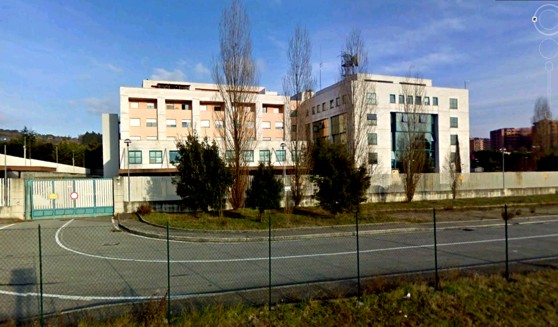

Shot above looks east toward Meredith’s place with monorail terminal (below) behind camera.

Post-Trauma Example Of Italy As One Of The Fastest-Learning And Adjusting Societies
Posted by Peter Quennell
Here is an image of Elisa Benedetti whose sad death after crashing and then disabling her car in deep mud our poster Catnip profiled back here.
Two other post-accidents traumas have been much in the news in Italy as Il Giornale today describes.
Two drivers were in traffic accidents in which they feared they had caused the death of others, and both are now dead.
One after dying of cold in the woods after wandering aimlessly for days, and the other after jumping off a bridge. In the case of the first, nobody was even hurt, and in the case of the second, the child who was slightly knocked by the car was released from hospital the same day.
As one would expect in Italy, these incidents have been the subject of much public discussion and several TV chat shows, similar to those for missing people that we learned about in the case of the missing or murdered Sonia Marra.
Now hospital emergency rooms and police forces are moving to beef up their capacity to provide psychological support to those similarly traumatized.
In the case of Elisa Benedetti, the cops tried really hard to help her in the times when she called them for help on her cellphone. Next time they might have psychological knowhow on their side.
Few other countries in the world come close to Italy for a caring population driving constructive effects like these.
Perugia Park Name Dropped, But Most Of Seattle Seems Now To Accept Knox’s Guilt And Moves On
Posted by Peter Quennell
Reports on the naming of this tiny park, now to be Summit Slope, appear in local Seattle media outlets here and here and here.
The xenophobic ugliness of the Knox-Mellas-Marriott campaign rolls on.
But many of the commenters from Seattle on the threads seem to find this slap at Perugia embarrassing and some even cowardly. The previous parks commissioner who first blinked at the naming of Perugia Park made himself wildly unpopular over this and other decisions and was forced to resign.
The pro-justice-done trend of the Seattle readers’ comments, except for the regular fanatics that biased reporter Steve Shay attracts, confirms what we are hearing from all our Seattle posters and readers. Seattle is seeing Knox’s guilt and is moving on.
The Massei Report has been very widely read among those interested in Meredith’s case, and our posters and readers say they can go days or week between encounters with anyone who still sees a railroading. Commendably, that includes in West Seattle.
One witness in Meredith’s case, the guy in the park, Antonio Curatolo, is reported-on in a couple of the same stories to have been charged with drug dealing a very long time ago.
One of several positive aftermaths of the terrible crime against Meredith seems to have been a major clamping-down against drugs in Perugia, and even cold cases are being revived.
Our main poster Machine had this to say about Curatolo in a comment on the post directly under this one.
It’s completely misleading of some journalists to refer to Antonio Curatolo as a key witness, star witness or super witness. Knox and Sollecito weren’t convicted on the strength of his evidence. His testimony merely provided further confirmation that Knox and Sollecito’s alibis are false and helped establish Meredith’s time of death.
I find it astonishing that Curatolo is facing trial for drug dealing 8 years after these offences allegedly took place. If there was sufficient evidence against him at the time, surely he would have been charged and convicted of this crime years ago. I wonder if the police officers and prosecutor involved in Curatolo’s case informed the authorities in Perugia of his alleged criminal activities.
It will be interesting to see what evidence there is against him. Photographs of him talking to a drug addict in Piazza Grimana will prove nothing. Why was wasn’t he stopped and searched for drugs? It seems there is no actual evidence that he was ever in possession of heroin. It needs to be established whether Curatolo was specifically targetted by the police for drug dealing or whether he was photographed when the police were carrying out survelliance on all the people who frequented Piazza Grimana.
Presumably all the people who think Curatolo testimony should be discounted because of the allegations against him feel the same way about the convicted baby killer and convicted mobster who have been called as witnesses for the defence.
True. There is zero sign that Antonio Curatolo had anything to gain by making things up at the trial of Knox and Sollecito. His testimony stood up well, and he was unflustered in the face of the lackluster and uncertain defense cross-examination.
In strong contrast defense witnesses Alessi and Aviello are both in prison and hoping for breaks, are almost certainly potential perjurers, and may blink rather than taking the stand and face perjury charges and longer sentences
Worth noting that the defenses have NEVER produced a witness that actually undermined the real case, as opposed to simply raising bizarre hypotheticals.
An Improvement To The Old City of Perugia: The End Of Civilization As We Know It?!
Posted by Peter Quennell
Probably not.
The Italians are veritable geniuses at design, and all over Italy you can see the starkly ancient and the starkly modern working very well side-by-side.
Boutiques in the ancient city-center buildings throughout Italy are often stunning in their interior modernity. Some Perugia examples can be seen here and here.
And the mountain autostradas (see bottom shot here) swoop and swerve along through tunnels and over bridges, often hundreds of feet high, in a way that makes you want to keep driving forever.
Perugia already has one major modern project that looks really good, is extremely useful, and generates an enormous amount of fun. Namely this one.
And another project now in the works is a very long escalator from hard by Meredith’s house to the highest point in the city.
This solar structure above and below is over the Via Mazzini which connects the great Corso Vanucci and its larger piazza with the smaller piazza slightly below where the courthouse complex is located.
You can see the courthouse directly ahead in the shot above, and in the shot below the courthouse is directly behind.
The blue vans carrying the defendants to trial usually unload right here.
The Six Largest National Parks In Umbria
Posted by Peter Quennell
The two images above: Parco Fluviale del Nera
The two images above: Parco Fluviale del Tevere
The two images above: Parco del Monte Subasio
The two images above: Parco Nazionale dei Monti Sibillini
The two images above: Parco del Trasimeno
The two images above: Parco Monte Cucco



